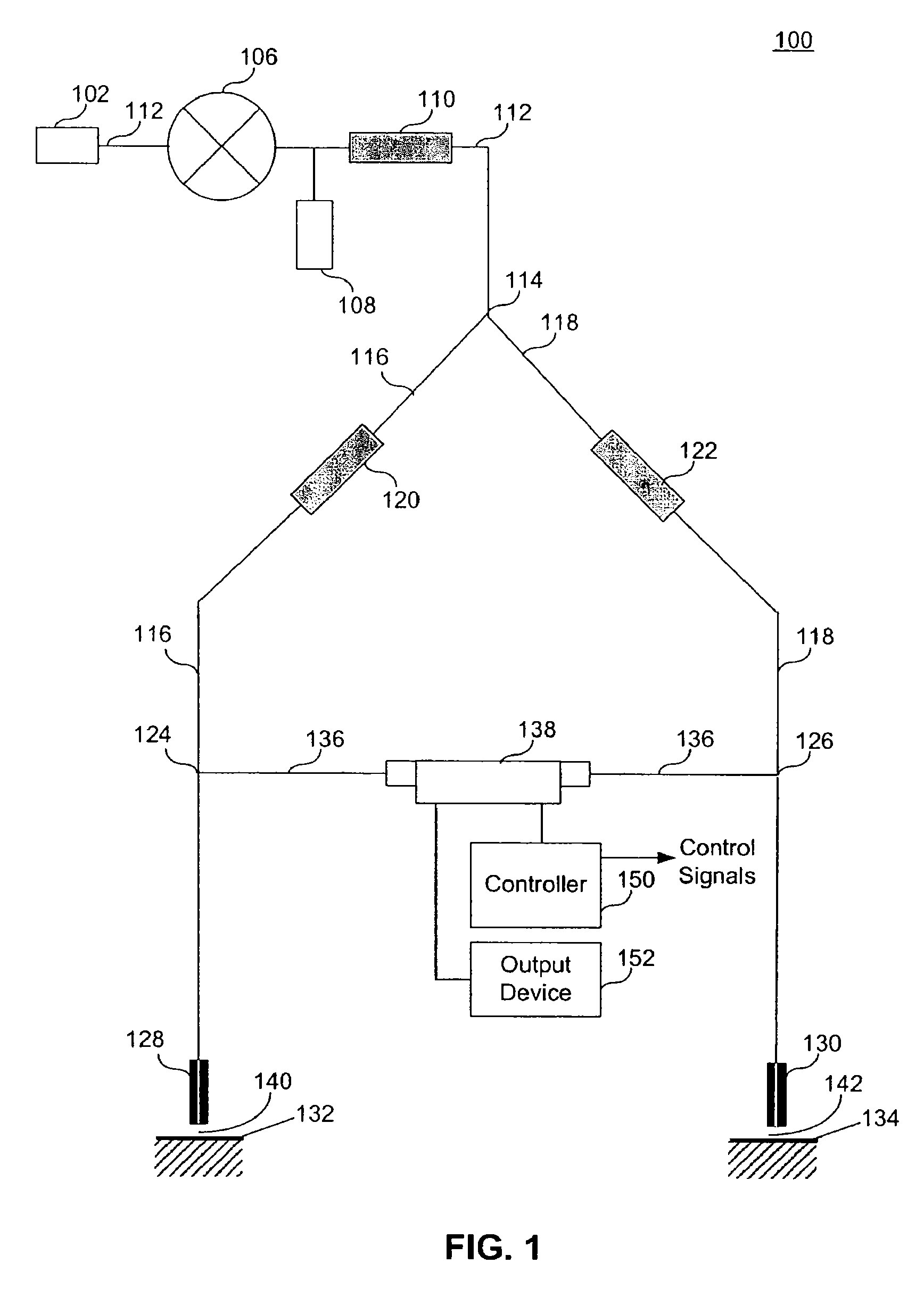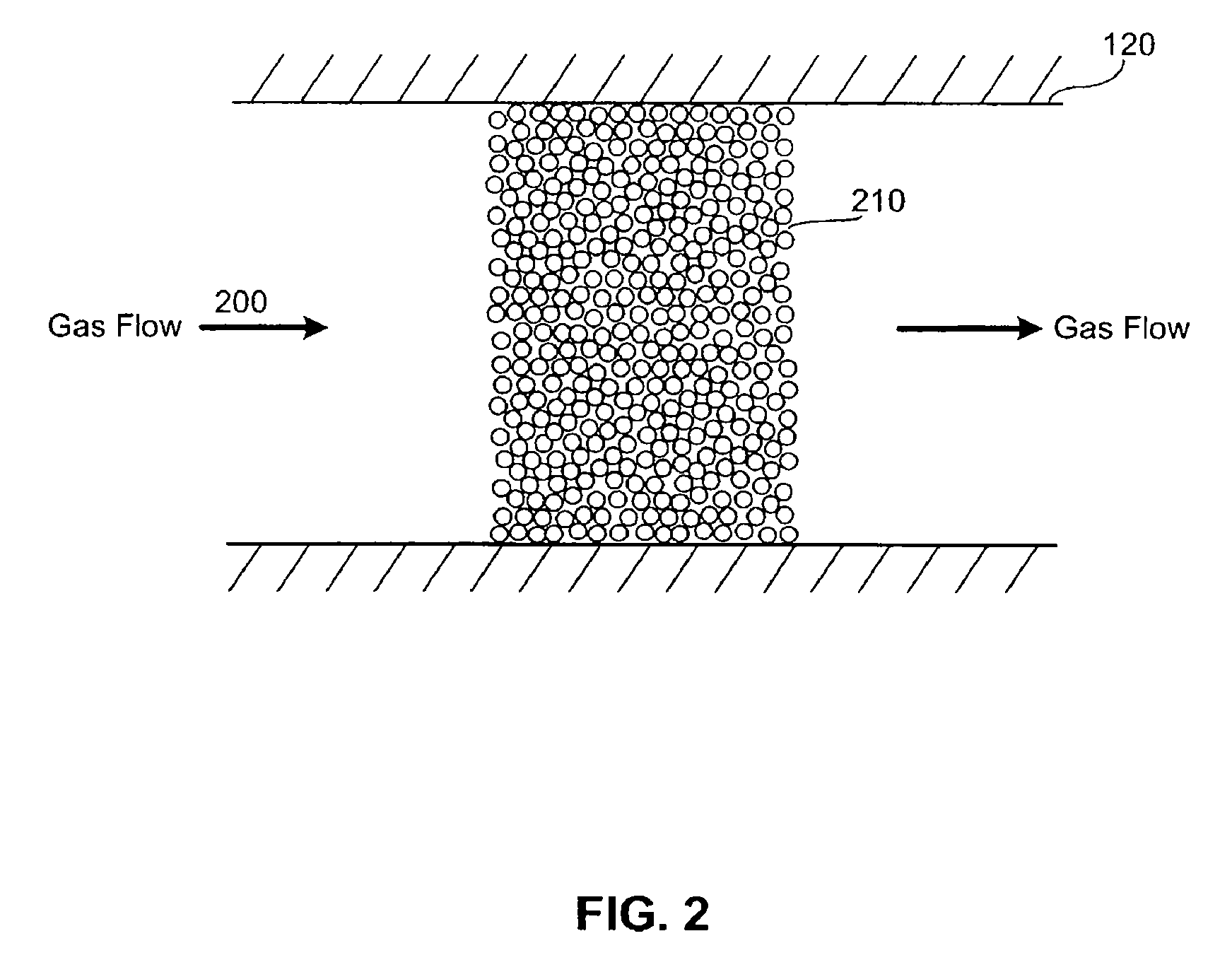Fluid gauge proximity sensor and method of operating same using a modulated fluid flow
a technology of proximity sensor and fluid flow, which is applied in the direction of measuring devices, instruments, using fluid means, etc., can solve the problems of significant deformation or ruination of workpieces, serious shortcomings of sensors, and significant challenges associated with creating proximity sensors of such accuracy
- Summary
- Abstract
- Description
- Claims
- Application Information
AI Technical Summary
Benefits of technology
Problems solved by technology
Method used
Image
Examples
Embodiment Construction
Overview
[0024]While the present invention is described herein with reference to illustrative embodiments for particular applications, it should be understood that the invention is not limited thereto. Those skilled in the art with access to the teachings provided herein will recognize additional modifications, applications, and embodiments within the scope thereof and additional fields in which the present invention would be of significant utility.
[0025]An embodiment of the present invention provides a system and method that use a fluid gauge proximity sensor. A source of modulated unidirectional or alternating fluid flow travels along at least one path having a nozzle and a flow or pressure sensor. The fluid exists at a gap between the nozzle and a target. The sensor outputs an amplitude modulated signal that varies according to a size of the gap.
[0026]In one example, modulated fluid interacts with only a target (e.g., a measurement surface), while in another example, the modulated...
PUM
 Login to View More
Login to View More Abstract
Description
Claims
Application Information
 Login to View More
Login to View More - Generate Ideas
- Intellectual Property
- Life Sciences
- Materials
- Tech Scout
- Unparalleled Data Quality
- Higher Quality Content
- 60% Fewer Hallucinations
Browse by: Latest US Patents, China's latest patents, Technical Efficacy Thesaurus, Application Domain, Technology Topic, Popular Technical Reports.
© 2025 PatSnap. All rights reserved.Legal|Privacy policy|Modern Slavery Act Transparency Statement|Sitemap|About US| Contact US: help@patsnap.com



